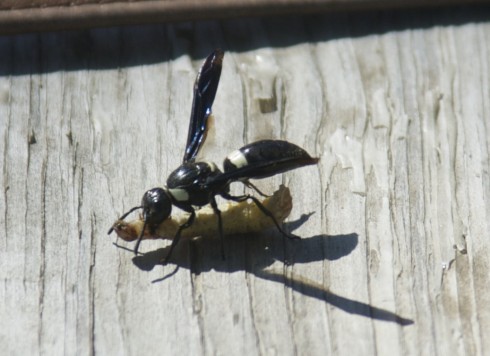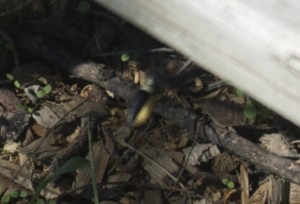
Maggie E. has a wonderful eye for spotting small fauna. She found this mason wasp (Monobia quadridens) while we were weeding the Heifer Ranch’s herb garden. It had caught this caterpillar and was trying to take off with it. It was a difficult job – the caterpillar probably weighed as much as the wasp – but it finally managed to take it away.

According to the Atlas of Vespidae, these wasps prey on small moth caterpillars. Which is probably why they are usually found in open habitats with flowers; hence the herb garden.
They also use caterpillars to feed their larvae (Wikipedia, 2011). They’ll lay an egg in a cell of their nest and stick a paralyzed beetle larvae, spider or caterpillar in with the egg to feed the wasp larvae when it hatches.
References

Identifying these wasps was not too hard. The first image in the google search for “wasp caterpillar” looked just like the bug we found, carrying almost the same type of caterpillar.
The image was from the wonderful “What is that bug?” where you can send in bug pictures and the author (Daniel Marlos) will try to identify them.
What’s That Bug referenced the BugGuide which gives the full taxonomic classification and a lot of information about habitat, food and life cycle that’s in an easily readable form.
The BugGuide, in turn, cites some of the more serious resources – books and such. But it turns out that an excellent reference for the wasps (Vespidae) of northern and eastern North America is available online. It’s the Identification Atlas of the Vespidae (Hymenoptera, Aculeata) of the northeastern Nearctic region (Buck et al., 2008).
The Atlas is hosted on another excellent resource, the Canadian Journal of Arthropod Identification, which is a web-based journal dedicated to documenting Canadian arthropods.
